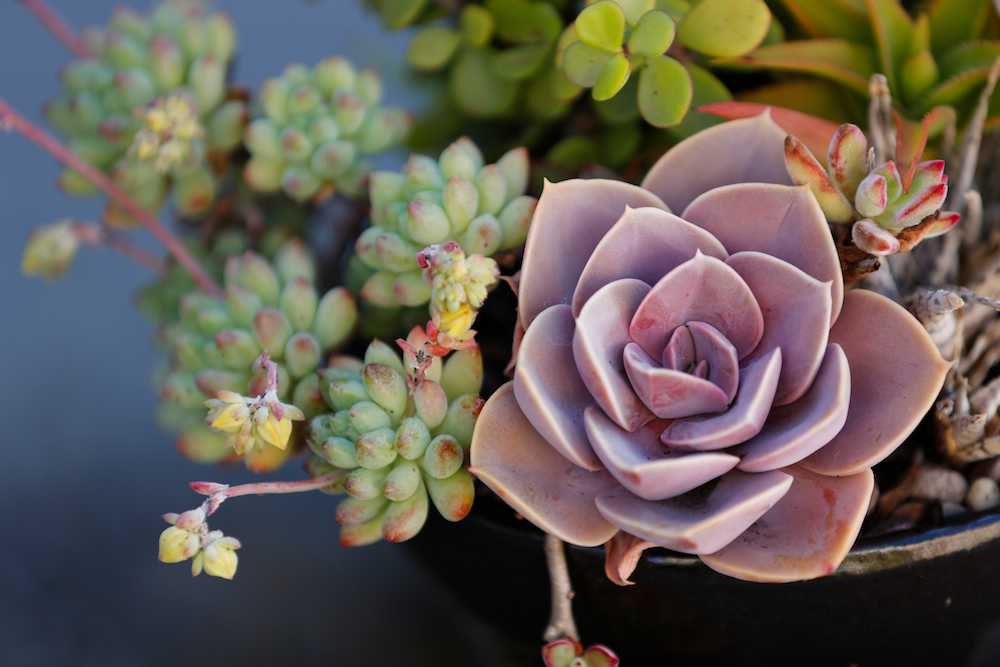Introduction
Succulents are among the most resilient and low-maintenance plants, making them a favorite for gardeners and houseplant enthusiasts alike. However, they can still fall victim to issues like overwatering, root rot, pests, and sunburn. If you’re wondering how to heal your succulent and bring it back to life, this guide will walk you through the essential steps.
In this article, we’ll explore common succulent ailments, their causes, and the best remedies to nurse your plants back to health. Whether your succulent has wrinkled leaves, brown spots, or mushy stems, we’ve got you covered.
Common Problems and How to Heal Your Succulents
1. Overwatering and Root Rot
Symptoms:
- Mushy, translucent leaves
- Black or brown spots on the stems or roots
- Leaves falling off easily
Causes:
Overwatering is one of the most common reasons succulents become unhealthy. Unlike other houseplants, succulents store water in their leaves and require minimal watering. When watered too frequently, their roots can become waterlogged and rot.
How to Fix It:
- Remove the plant from its pot and inspect the roots. Trim away any black, mushy, or foul-smelling roots.
- Allow the plant to dry for 24-48 hours in a warm, airy place.
- Repot the succulent in dry, well-draining soil and a container with drainage holes.
- Water sparingly, ensuring the soil is completely dry between waterings.
2. Underwatering and Dehydration
Symptoms:
- Wrinkled, shriveled leaves
- Dry, brittle stems
- Leaf tips turning brown
Causes:
Succulents need water, even though they can survive drought-like conditions. Extended periods without water can cause dehydration, leading to shriveled leaves and a weakened plant.
How to Fix It:
- Water the succulent deeply, allowing excess water to drain from the pot.
- Maintain a proper watering schedule—once every 10-14 days, depending on humidity levels.
- Use the “soak and dry” method: water thoroughly, then wait for the soil to dry before the next watering.
3. Sunburn and Light Stress
Symptoms:
- White, brown, or reddish spots on leaves
- Leaves appearing scorched or crispy
- Sun-exposed leaves dying off
Causes:
Too much direct sunlight can cause sunburn, especially in delicate indoor succulents that aren’t accustomed to intense light exposure.
How to Fix It:
- Move the succulent to a shadier spot or introduce it to bright light gradually.
- If the succulent is indoors, place it near a window with indirect light or use a sheer curtain to filter the sun.
- Trim damaged leaves to encourage new growth.
4. Pest Infestations
Common Succulent Pests:
- Mealybugs: Small, white, cotton-like insects that suck the sap from plants.
- Aphids: Tiny green or black insects that cluster on stems and new growth.
- Spider Mites: Microscopic pests that cause webbing and tiny brown spots.
- Fungus Gnats: Small black flies that thrive in overly moist soil.
How to Fix It:
- Isolate the infected plant from other succulents.
- Remove pests manually with a cotton swab dipped in rubbing alcohol.
- Spray the plant with diluted neem oil or insecticidal soap.
- Ensure proper airflow around your succulents to prevent pest infestations.
5. Fungal and Bacterial Infections
Symptoms:
- Black spots or mold growth on leaves
- Soft, mushy areas on stems
- Foul smell from the soil or plant
Causes:
Excess moisture and poor airflow can lead to fungal and bacterial infections, such as powdery mildew or black rot.
How to Fix It:
- Remove infected leaves or stems using sterilized pruning shears.
- Allow the plant to dry out completely before watering again.
- Treat with a fungicide or a mix of water and hydrogen peroxide to prevent further spread.
Preventative Care: Keeping Your Succulents Healthy
1. Choosing the Right Soil
Succulents thrive in well-draining soil that mimics their natural desert environment. Use a cactus mix or make your own by combining potting soil with sand, perlite, or pumice.
2. Proper Watering Techniques
- Always water at the base of the plant, avoiding the leaves.
- Use a watering schedule that matches your climate—less frequent in humid conditions and more in dry regions.
- A moisture meter can help determine when the soil is completely dry.
3. The Ideal Pot for Succulents
- Choose pots with drainage holes to prevent water buildup.
- Terracotta or ceramic pots are best, as they allow for better airflow.
- Avoid plastic pots that retain moisture and increase the risk of root rot.
4. Sunlight and Temperature Requirements
- Most succulents need 6-8 hours of bright, indirect sunlight daily.
- If growing indoors, place succulents near a south-facing window.
- Keep them in temperatures between 60-80°F (15-27°C) and protect them from extreme heat or frost.
5. Seasonal Care Tips
- Spring & Summer: Growth season—water slightly more and fertilize monthly with diluted succulent fertilizer.
- Fall & Winter: Dormant period—reduce watering and keep plants in a stable, warm environment.
How to Propagate and Regrow Your Succulents
If your succulent is too damaged to save, don’t lose hope! You can propagate new plants from healthy parts.
1. Leaf Propagation
- Gently twist off a healthy leaf from the plant.
- Let it dry for 2-3 days until the cut end forms a callus.
- Place it on dry succulent soil and mist occasionally until roots appear.
2. Stem Cutting Propagation
- Use a sharp, sterilized knife to cut a healthy stem.
- Allow the cutting to dry for 3-5 days before planting in dry soil.
- Water sparingly once roots develop.
3. Offsets or Pups
- Many succulents, like aloe and echeveria, produce baby plants (offsets).
- Gently remove these pups and replant them in their own pots.
Conclusion
Healing a succulent requires patience, but with the right care, even severely damaged plants can recover. Whether you’re dealing with root rot, dehydration, pests, or sunburn, taking the proper steps will help restore your succulent’s health.
By following preventative care measures—choosing the right soil, watering correctly, and providing ideal light conditions—you can ensure your succulents remain vibrant and thriving for years to come.
more information to visit our website businessflayer.co.uk.






